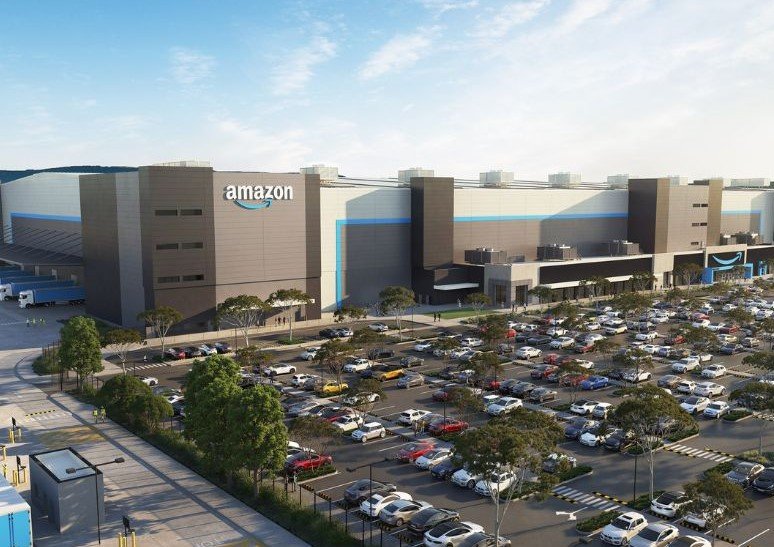Amazon is doubling down on Australia’s tech potential, revealing a plan to pump AU$20 billion into data centers by 2029 — the biggest tech investment in the country’s history.
The move comes at a time when AI workloads are soaring, storage demand is climbing, and cloud infrastructure is struggling to keep up. Amazon’s answer? Go bigger than ever before.
A Cloud Boom Wrapped in Aussie Sunshine
Amazon’s AWS arm is going all in. It’s not just about building more data centers — it’s about turning Australia into a serious player on the world tech stage.
This AU$20 billion investment (that’s around $13 billion USD) is set to unfold between now and 2029. It’s a long-term bet that Australia won’t just consume cloud services — it’ll help define the future of them. Amazon says the cash will boost local cloud infrastructure, support AI development, and keep up with surging demand in areas like machine learning, data analytics, and government computing.
And yes, it’s historic. No other tech company has thrown down this kind of money on Aussie soil. Not even close.

More Than Servers and Storage
There’s more going on here than just metal racks and blinking lights.
Amazon’s focus is sharply aimed at building AI capability within the country. The shift from traditional workloads to generative AI means existing infrastructure just doesn’t cut it anymore. This investment changes the equation.
Here’s what we’re talking about:
-
Expansion of AWS data centers across key metro areas like Sydney, Melbourne, and potentially Brisbane.
-
Significant upgrades in server capacity — think low-latency, high-throughput machines designed for AI and deep learning.
-
Support for hybrid cloud systems that help banks, hospitals, and government agencies modernize without starting from scratch.
It’s not just corporate — it’s national.
The Ripple Effect Across Industries
While Amazon’s announcement is focused on infrastructure, the dominoes are already lining up across multiple sectors.
Take finance. Banks are moving away from legacy systems at breakneck speed. With AWS’s expanded local availability zones, they can run real-time risk models and fraud detection closer to home. In healthcare, cloud-native imaging and diagnostics could see a boost thanks to better data pipelines and AI integration. And in retail, real-time analytics and customer behavior prediction become more viable with lower latency and higher uptime.
There’s also a strong likelihood of public sector benefits. With state and federal agencies increasingly leaning on cloud solutions for digital services, Amazon’s investment could unlock faster, more secure platforms for things like license renewals, education portals, and emergency response systems.
A Breakdown of What’s Coming
To really grasp the scope, it helps to put some numbers and projections on the table. Here’s what we know so far:
| Investment Area | Details and Estimates |
|---|---|
| Total Investment | AU$20 Billion (2025–2029) |
| US Dollar Equivalent | ~$13 Billion USD |
| Focus | Cloud infrastructure, AI computing, data storage |
| Regions Involved | Sydney, Melbourne, Possible new zones in Queensland or WA |
| Potential Jobs Created | Estimated 11,000+ direct and indirect roles during build and ops phase |
| Long-Term Goal | Make Australia a leader in AI and cloud computing |
Even if some of these estimates shift, the scale is undeniable.
Local Tech Scene Gets a Jolt
The announcement has landed like a thunderclap in Australia’s startup circles.
AWS has long been a lifeline for early-stage tech companies, offering everything from storage credits to compute power for AI training. Now, those same startups might get faster performance, better support, and closer integration with Amazon’s global systems — without needing to route traffic through Singapore or the US.
For developers and engineers, this is also a job story. While most of the AU$20B will go into infrastructure and operations, there’s going to be a spike in demand for data engineers, cybersecurity experts, project managers, and AI specialists.
Basically, if you can build or protect a cloud system, there’s going to be a seat at the table.
China, the US, and the Global Chessboard
There’s a geopolitical undertone here that’s hard to ignore.
Amazon’s play lands in a world where digital infrastructure is no longer just a tech topic — it’s national security, economic strategy, and global competition all rolled into one.
China is investing heavily in its cloud and AI ambitions. The US wants to ensure its tech giants — like Amazon and Microsoft — hold sway in allied regions. By choosing Australia, Amazon strengthens a “Five Eyes” partner’s hand in the digital arms race. And by doing it at this scale, it sends a clear signal that Australia isn’t just watching from the sidelines.
But Wait — There Are Concerns Too
Of course, it’s not all sunshine and server rooms.
Environmentalists have flagged concerns over water and power usage, particularly with hyperscale data centers. Australia already faces tough choices around resource management, and Amazon will need to demonstrate that its expansion is sustainable.
Then there’s the concentration of tech power. Critics worry that mega-corporations like Amazon could dominate digital infrastructure, making smaller competitors — or even governments — overly reliant on one company.
That said, the government is expected to enforce compliance through existing frameworks and data sovereignty rules. How effective those will be under the weight of AU$20B? That’s anyone’s guess.








